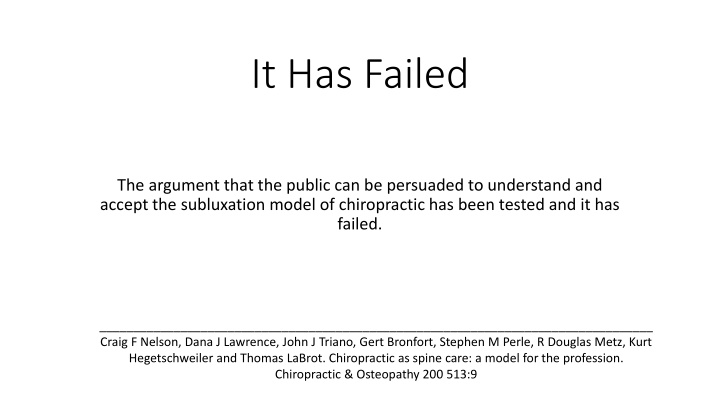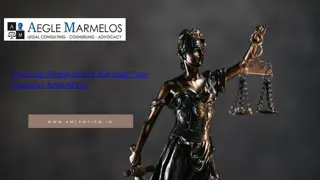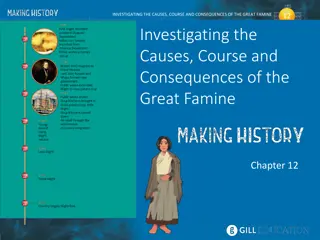It Has Failed
The claim that the public can be convinced to embrace the subluxation model of chiropractic has been put to the test and found lacking. This study, conducted by Craig F. Nelson and others, highlights the challenges in promoting this model to a wider audience. Despite efforts by various researchers, including Dana J. Lawrence and Gert Bronfort, the evidence suggests that the general public remains unconvinced. The findings shed light on the uphill battle faced in gaining acceptance for this approach within mainstream healthcare.
Download Presentation

Please find below an Image/Link to download the presentation.
The content on the website is provided AS IS for your information and personal use only. It may not be sold, licensed, or shared on other websites without obtaining consent from the author.If you encounter any issues during the download, it is possible that the publisher has removed the file from their server.
You are allowed to download the files provided on this website for personal or commercial use, subject to the condition that they are used lawfully. All files are the property of their respective owners.
The content on the website is provided AS IS for your information and personal use only. It may not be sold, licensed, or shared on other websites without obtaining consent from the author.
E N D
Presentation Transcript
It Has Failed The argument that the public can be persuaded to understand and accept the subluxation model of chiropractic has been tested and it has failed. __________________________________________________________________________________ Craig F Nelson, Dana J Lawrence, John J Triano, Gert Bronfort, Stephen M Perle, R Douglas Metz, Kurt Hegetschweiler and Thomas LaBrot. Chiropractic as spine care: a model for the profession. Chiropractic & Osteopathy 200 513:9
Questionable Practices The profession is further encumbered by questionable institutionalized practices. For example, some practice consultants promote the policy of withholding administration of treatment on the first visit, preferring to reschedule the patient for a report of findings on a subsequent visit. Where is the clinical rationale for such practice? Are these doctors insufficiently skilled in interpreting the history and examination findings for a routine first visit without time to confer and study? __________________________________________________________________________________ Craig F Nelson, Dana J Lawrence, John J Triano, Gert Bronfort, Stephen M Perle, R Douglas Metz, Kurt Hegetschweiler and Thomas LaBrot. Chiropractic as spine care: a model for the profession. Chiropractic & Osteopathy 200 513:9
Degrade Credibility Others promote the use of x-rays on nearly every patient in order to determine biomechanical deviations from a theoretical "model" of a normal spine implying that this information is so essential to successful treatment that the benefit outweighs the very real risk of radiation exposure. These and other business practices promoted across the profession are tolerated without challenge by the rank and file. These practices degrade the credibility of the profession and its members as competent clinicians and diminish the public's trust and level of cultural authority. __________________________________________________________________________________ Craig F Nelson, Dana J Lawrence, John J Triano, Gert Bronfort, Stephen M Perle, R Douglas Metz, Kurt Hegetschweiler and Thomas LaBrot. Chiropractic as spine care: a model for the profession. Chiropractic & Osteopathy 200 513:9
Suspension of Disbelief Despite the critical threats to the validity of this paradigm, a sizable proportion of the profession still holds these postulates to be valid. The segment of the profession that continues to hold firmly to Palmer's Postulates do so only through a suspension of disbelief. __________________________________________________________________________________ Craig F Nelson, Dana J Lawrence, John J Triano, Gert Bronfort, Stephen M Perle, R Douglas Metz, Kurt Hegetschweiler and Thomas LaBrot. Chiropractic as spine care: a model for the profession. Chiropractic & Osteopathy 200 513:9
Ethically Suspect These stratagems to avoid the truth that Palmer's Postulates are unproven might be beneficial to the chiropractor, but are ethically suspect when they allow the practitioner to maintain a "faith, confidence and belief" in that paradigm to the patient's ultimate detriment. __________________________________________________________________________________ Craig F Nelson, Dana J Lawrence, John J Triano, Gert Bronfort, Stephen M Perle, R Douglas Metz, Kurt Hegetschweiler and Thomas LaBrot. Chiropractic as spine care: a model for the profession. Chiropractic & Osteopathy 200 513:9
Indefensible A number of models are impractical, implausible or even indefensible from a purely scientific point of view (e.g., subluxation-based healthcare), from a professional practice perspective (e.g., the primary care model), or simply from common sense (e.g. Innate Intelligence as an operational system for influencing health). __________________________________________________________________________________ Craig F Nelson, Dana J Lawrence, John J Triano, Gert Bronfort, Stephen M Perle, R Douglas Metz, Kurt Hegetschweiler and Thomas LaBrot. Chiropractic as spine care: a model for the profession. Chiropractic & Osteopathy 200 513:9
At Odds with Scientific Facts This set of beliefs is probably more correctly described as the ideology of chiropractic or the hypothesis of chiropractic, rather than as a philosophy. This model of chiropractic has continued to advance a hypothetical model of health and disease divergent from other (particularly mainstream) modes of thought among the health professions. Indeed, some aspects of the hypothesis are now known to be at odds with scientific fact. __________________________________________________________________________________ Craig F Nelson, Dana J Lawrence, John J Triano, Gert Bronfort, Stephen M Perle, R Douglas Metz, Kurt Hegetschweiler and Thomas LaBrot. Chiropractic as spine care: a model for the profession. Chiropractic & Osteopathy 200 513:9
Rejection of Vitalism We must also consider the concept of vitalism (in chiropractic, Innate Intelligence) as a component of Palmer's Postulates. Although there is a long historical legacy of vitalism, and although it continues to be a feature within many contemporary belief systems, there really can be no compromise on its inclusion as a defining principle of chiropractic. It was precisely the rejection of vitalism in the 18thCentury and the emerging understanding (through the invention of the microscope and other technological advances) of biological mechanisms that marks one of the watershed moments in the evolution of science. Chiropractic can choose to retain its vitalistic component only if it chooses to operate completely outside the scientific healthcare community. __________________________________________________________________________________ Craig F Nelson, Dana J Lawrence, John J Triano, Gert Bronfort, Stephen M Perle, R Douglas Metz, Kurt Hegetschweiler and Thomas LaBrot. Chiropractic as spine care: a model for the profession. Chiropractic & Osteopathy 200 513:9
Reject Vitalism Vitalism does not require any further or more extensive analysis before rejecting it. To reject vitalism is to simply to announce that one accepts the conventional view of biology similar to the way one accepts the convention view of cosmology by rejecting a geocentric universe. __________________________________________________________________________________ Craig F Nelson, Dana J Lawrence, John J Triano, Gert Bronfort, Stephen M Perle, R Douglas Metz, Kurt Hegetschweiler and Thomas LaBrot. Chiropractic as spine care: a model for the profession. Chiropractic & Osteopathy 200 513:9
Failed We have asserted that Palmer's Postulates have failed. __________________________________________________________________________________ Craig F Nelson, Dana J Lawrence, John J Triano, Gert Bronfort, Stephen M Perle, R Douglas Metz, Kurt Hegetschweiler and Thomas LaBrot. Chiropractic as spine care: a model for the profession. Chiropractic & Osteopathy 200 513:9
Back & Neck Pain In fact chiropractic has attempted this by defining itself in metaphysical terms (Innate Intelligence), as a technique (chiropractic adjustment), and as an ideology (Palmer's Postulates), rather than as a provider of specific clinical services. The failure of this approach is in fact the genesis of this paper. To define the clinical purpose of chiropractic, it is necessary only to observe what chiropractors actually do and for what purposes patients seek care from doctors of chiropractic: the provision of portal-of-entry care for the diagnosis and management of back pain, neck pain, and related disorders. __________________________________________________________________________________ Craig F Nelson, Dana J Lawrence, John J Triano, Gert Bronfort, Stephen M Perle, R Douglas Metz, Kurt Hegetschweiler and Thomas LaBrot. Chiropractic as spine care: a model for the profession. Chiropractic & Osteopathy 200 513:9
Never Ending In order to fully exploit the advantages of its current conservative approach the chiropractic profession must take active measures to curb abuses that run counter to this approach. There is a long tradition in the profession of promoting the idea that the unadjusted spine is an invitation to disease. There are practice management procedures that attempt to maximize the number of patient visits that can be extracted from each new patient. There is nothing conservative about a treatment regimen of 3- times-a-week, forever. There is a commonly expressed notion among the public and among other health professionals that chiropractic treatment is open-ended and often never-ending. __________________________________________________________________________________ Craig F Nelson, Dana J Lawrence, John J Triano, Gert Bronfort, Stephen M Perle, R Douglas Metz, Kurt Hegetschweiler and Thomas LaBrot. Chiropractic as spine care: a model for the profession. Chiropractic & Osteopathy 200 513:9
Ideological Gurus The academic institutions will be able to free themselves from the stranglehold of economic dependence on tuition and the political reliance on ideological gurus who manipulate alumni and support to garner institutional control. __________________________________________________________________________________ Craig F Nelson, Dana J Lawrence, John J Triano, Gert Bronfort, Stephen M Perle, R Douglas Metz, Kurt Hegetschweiler and Thomas LaBrot. Chiropractic as spine care: a model for the profession. Chiropractic & Osteopathy 200 513:9























